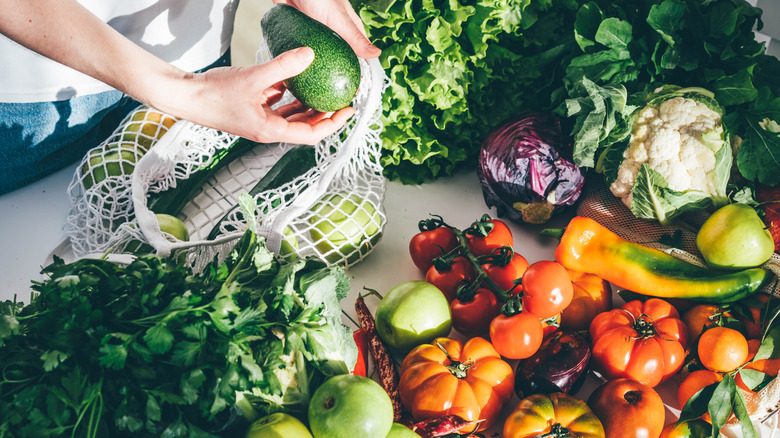Here's What It Means When Pre-Packaged Food Is Labeled 'Clean'
When shopping at your local grocery store, you're bound to come across numerous terms and buzzwords on food packaging. Should you encounter labels with the word "clean," keep in mind there's no clear definition of what clean means when it comes to food. However, the term is often used to describe items that are minimally processed or aren't processed at all, offer plenty of nutrients, and lack unnecessary additives such as excess sugar and salt.
Food labeled as clean falls into a similar category as those bearing the word "natural" on the label, which can also cause some confusion in the grocery aisle. For instance, there's a difference between natural and organic food labels, as the latter category is subject to specific federal standards designating how it's produced and what ingredients are included. Conversely, foods labeled as natural aren't subject to the same rigorous standards.
While challenging, understanding what these labels are trying to communicate is important, as it affects your ability to knowledgeably choose items for your household.
Why it's important to read the ingredient list
Clean eating can mean a lot of different things to consumers. People often associate the term with foods that lack artificial ingredients, but it can also have links to diets that don't include meat or dairy products. This confusion stems from the fact that the word clean is typically used as a marketing tool to attract nutrition-minded consumers to a particular brand or product. Because it lacks a verifiable definition, it can mean a number of things when stamped on food labels.
That's not to say that all pre-packaged foods boasting the clean label are without important nutrients. For instance, clean processed and packaged food can include canned items, such as canned tomatoes, which offer a nutritional advantage over fresh (the canning process increases the concentration of an antioxidant called lycopene). So when it comes to finding the most nutritious pre-packaged items, it's important consumers know how to read the nutrition labels on their favorite foods.
Go beyond the bells and whistles of the packaging by examining the ingredient listing and pay close attention to the order of ingredients, as those listed first are the most plentiful. Also, pre-packaged items that list something less nutritious first, such as hydrogenated oils, probably aren't as "clean" as the label purports them to be. You can't judge a book by its cover and you can't always find nutrient-rich packaged foods based on clean labels alone.

